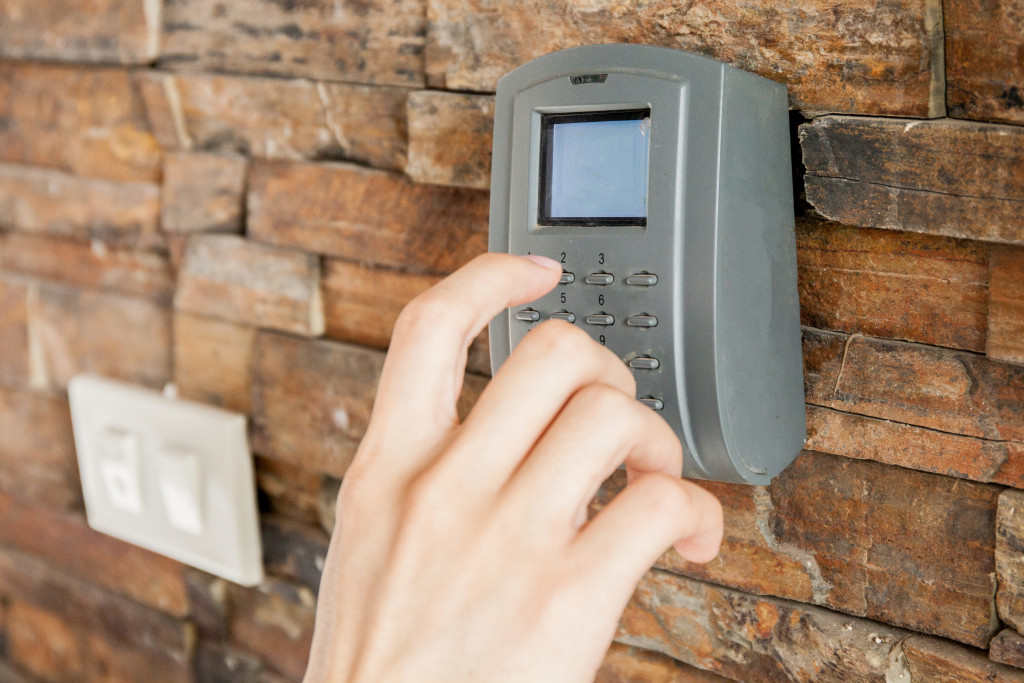- Two-factor authentication is an effective security measure that requires users to provide two separate authentication factors.
- A virtual private network (VPN) creates a secure, encrypted connection between your device and the internet.
- Cybersecurity training and education can help reduce the risk of data breaches and security incidents caused by human error.
- Firewall protection prevents hackers and malware from accessing your network.
- Alarm system monitoring helps detect intruders entering your premises.
In today’s digital world, security threats to businesses are evolving and becoming more sophisticated. It is, therefore, essential for businesses to adopt modern security technologies to safeguard their sensitive information and assets. This guide will discuss five technologies to help secure and protect your business from potential security threats.
1. Two-Factor Authentication (2FA)
Two-factor authentication is a security process in which users provide two different authentication factors to verify their identity. These factors could be something the user knows, such as a password or PIN, and something the user has, such as a security token or mobile device. By requiring users to provide two separate authentication factors, 2FA makes it much more difficult for hackers to access your systems and data.
Implementing 2FA is relatively simple and inexpensive. Most major online services, such as Google, Facebook, and Twitter, offer 2FA options that you can easily enable. There are also many third-party 2FA providers that you can use to secure your business applications and data.
2. Virtual Private Network (VPN)
A virtual private network (VPN) is a technology that creates a secure, encrypted connection between your computer or mobile device and the internet. When you use a VPN, your data is routed through a remote server, making it difficult for hackers to intercept or spy on your online activities.
A VPN is especially important if you or your employees work remotely or access company data from public Wi-Fi networks. Using a VPN ensures that all data transmitted between your device and the company network is encrypted and secure.
3. Cybersecurity Training and Education

One of your business’s most significant security threats comes from your employees. Studies have shown that human error is the leading cause of data breaches and security incidents. Therefore, it’s crucial to provide your employees with the necessary cybersecurity training and education to reduce the risk of security incidents.
Training and education should cover password security, phishing scams, malware, and social engineering tactics. Employees should also be taught to recognize and report suspicious activity or potential security threats.
Here are other ways to train your employees on cybersecurity:
Introduce Policies and Procedures
Outline a written security policy that clearly describes the company’s expectations and response to potential breaches. Encourage employees to review these policies regularly and ask questions if they don’t understand anything.
Educate on Cybersecurity Best Practices
Provide ongoing educational opportunities to help employees stay up-to-date with the latest developments in cybersecurity. This could include attending webinars or seminars or reading industry publications and blogs on cybersecurity best practices.
Create an Open Dialogue
Ensure your team feels comfortable discussing cybersecurity issues at work and encourage them to bring up any management concerns when necessary. Doing this can help create a culture of security and accountability, where employees understand the importance of their role in helping protect the organization.
Test Employees on Their Knowledge
Consider implementing regular tests or quizzes to ensure employees retain what they have learned from training sessions. This will help you identify any weak areas that need further attention and can be used as an effective measure for continuous improvement.
Assign Ownership of Training and Education
Create a team or individual responsible for ensuring that training and education are up-to-date and relevant to the organization’s security needs. This will help ensure all employees receive appropriate training and stay on top of the latest developments in cybersecurity.
4. Firewall Protection
A firewall is a security device that monitors and filters network traffic. Firewalls can be hardware or software-based and are designed to block unauthorized access to your computer network while allowing legitimate traffic to pass through.
A properly configured firewall can prevent hackers and malware from accessing your network and compromising your systems and data. It’s essential to regularly update your firewall and monitor its logs for any suspicious activity.
5. Alarm System Monitoring

Having high-quality commercial alarm system monitoring in place is essential to protect your business from intruders. Alarm systems detect unauthorized access and alert personnel when intruders enter your premises. Some alarm systems also offer remote monitoring, allowing you to keep track of activity on your premises 24/7.
Alarm monitoring systems can be connected to various sensors, including motion detectors, door and window sensors, and glass break detectors. Some systems can even be connected to security cameras, allowing you to monitor your business premises remotely.
In Summary
Securing your business is essential to protect your data, assets, and reputation. By implementing the technologies discussed in this article, you can reduce the risk of security incidents and keep your business safe from potential threats. Two-factor authentication, VPNs, cybersecurity training, firewalls, and alarm system monitoring are all crucial components of a comprehensive security strategy. By taking a proactive approach to security, you can protect your business against current and future security threats.
